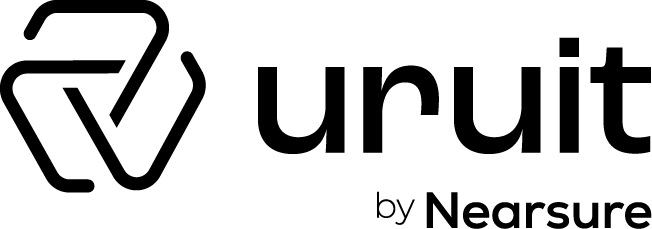Contents
5 Fundamentals of UX Design Have Great Impact in SEO
If you’re involved in design, you’ve likely seen the shift toward enhancing the user experience (UX) in recent years. Between the advent of mobile devices and increasingly demanding audiences, it’s both desirable for its many benefits and, sometimes, unavoidable. Actually, chances are you’ve likely noticed it if you’re a marketer too, from the angle of Search Engine Optimization (SEO). But how do UX design and SEO overlap, exactly? To explore that subject, we’ll need to delve into 5 fundamentals of UX design that impact SEO. So, let’s begin.
What is UX design, specifically?
Initially, let’s begin by defining UX design. You may be familiar with the concept, but examining it here will help contextualize its overlap with SEO.
At its core, UX design refers to the philosophy of designing with the express intent of improving the user experience. This applies to websites, applications, and any user interfaces (UIs) with which one’s audiences and customers may come in contact. It may thus begin with product development and find its way to website redesigns.
To become more specific, while exact definitions will vary, UX primarily revolves around ensuring 3 main factors:
- Usability and responsiveness
- Usefulness
- DesirabilityThese concepts, of course, yield universal benefits – and SEO is no exception.
What is SEO, and do the two overlap?
SEO, then, is the optimization of content for search engines. It typically revolves around Google specifically, given its tremendous search engine market share, and thus caters to its algorithm. The algorithm gauges over 200 factors that determine content’s quality, authoritativeness, and usefulness to audiences, including:
- Loading speed and mobile-friendliness
- Formatting; heading, alt. tags, bullet lists, etc
- Engagement signals; time on page, bounce rates, shares, etc
- Page authority (PA)
- Security certificatesIn turn, SEO practices seek to address these criteria, allowing content to rank higher in search engine results pages (SERPs). For stronger focus into particular areas, SEO typically branches into 3 different types:
- On-page; on-page elements such as images and formatting
- Off-page; off-page signals such as shares and backlinks
- Technical; technical elements like sitemaps and website technical healthThus, despite what the name may imply, SEO does not intend merely to raise visibility. That is where it begins, but delivering quality and ensuring user satisfaction for long-term retention is where it expands to. Consider, for example, how digitaldot.us and various other digital marketing agencies treat SEO and UX as intimately interconnected. That’s precisely because the fundamentals of UX design impact SEO in profound ways, from websites to individual pages.
The 5 fundamentals of UX design that impact SEO
Having discussed both concepts, some connections may already emerge. Let’s outline these connections then, consolidating them into 5 specific UX fundamentals.

#1 Simplicity
The very first spearhead of UX design that comes to mind is likely simplicity. Nothing says “usability” quite like a clutter-free, clean, intuitive design, right? Well, this principle finds excellent use in SEO as well. For the sake of text economy, consider two very substantive examples; above-the-fold content and on-page clutter.
Keeping valuable content above the fold is a mainstay SEO practice, as it ensures visibility for key elements and buttons. This is where valuable Calls to Action (CTAs) are frequently placed to ensure they’re seen even if visitors bounce. Similarly, SEO often discourages on-page clutter to ensure CTA visibility and provide more digestible content.
#2 Content layout
On the subject of content layout, this is likely where UX and SEO converge most strongly. In this regard, beyond aesthetics, an optimal content layout best contributes to readability and benefits both.
As we highlighted above, readability plays a crucial role in SEO as it incites engagement. Here, UX design mandates simplicity, and SEO mandates a clean structure that makes content digestible. Thus, consider how the two overlap in the following related applications:
- White space and negative space to ease the eyes
- Headers, bullet lists, and numbered lists to break up long content
- Visual media to please the eyes and enhance quality
#3 Responsiveness and load speed
Another point of strong convergence lies in loading speed. Indeed, most UX optimization tools will stress load speeds as a penultimate factor of website responsiveness. And, as we’ve highlighted above, SEO also focuses on it as a key metric.
The reason for this is simple, and there’s significant overlap between the two; who likes a sluggish, unresponsive experience? Most likely, nobody. SEO notes that visitors will frequently bounce from slow pages, and Google/SOASTA’s research highlights this correlation with certainty.
Therefore, SEO will frequently take UX’s core tenet of responsiveness at heart and optimize on-page content accordingly. Fortunately, Google’s own PageSpeed Insights tool provides an excellent starting point in this direction.
#4 Mobile-friendliness
Moreover, on the subject of responsiveness, SEO champions mobile-friendliness – and UX design typically does so too. That’s in no small part because Google indexes the mobile versions of pages first, and mobile users abound, respectively.
To work toward mobile-friendliness, marketers and designers will typically agree on such practices as:
- Removing unused JavaScript and minifying style sheets to increase response times
- Compressing images and using appropriate file formats to reduce load times
- Opting for a clean, bloat-free UI that facilitates navigation on smaller screensAs above, PageSpeed Insights can offer invaluable assistance in this regard, as can Google’s mobile-friendliness test tool.
#5 Site structure
Finally, having touched on providing a clean navigation experience, let us conclude with site structure. Returning to the point of simplicity, a clean site structure will yield benefits for both UX and SEO.
Consider how a clean site structure enables better indexing and prevents orphaned pages, thus boosting SEO. This same principle informs UX, allowing visitors to navigate a website seamlessly. Moreover, a clean site structure thus helps ensure the following as well:
- Proper XML and HTML sitemaps
- Optimized, clear header menus
- Easy keyboard-only navigation for accessibility
Conclusion
To summarize, we may easily argue that UX design and SEO frequently overlap and rarely, if ever, conflict. Indeed, the fundamentals of UX design impact SEO, from design simplicity and responsiveness to mobile-friendliness and structure. One may quickly identify the reason for this in their common goal; to enhance the user experience and increase satisfaction.


